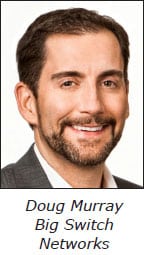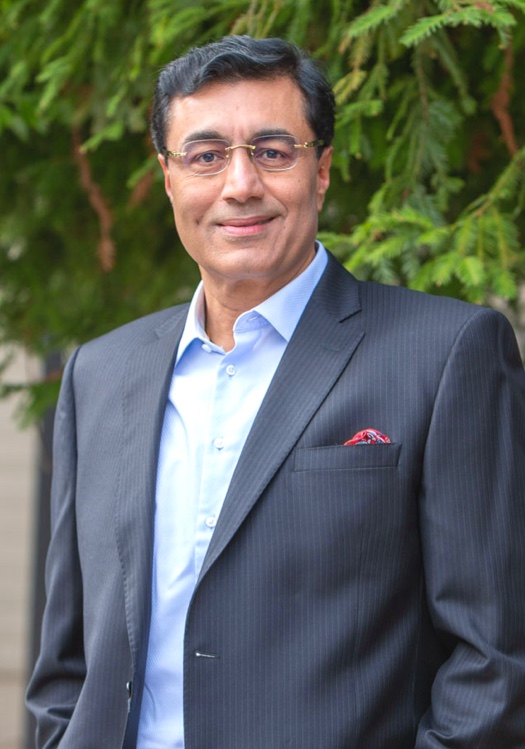- Posted on : October 24, 2017
-
- Industry :
- Type: News

Four years ago, Doug Murray (Group Q400) became CEO of Big Switch Networks, a data center networking company that was in turmoil. At the time, the company was suffering from poor results, low morale and a negative public image, which was painfully evident from employee reviews on social media. On his first day on the job, ten percent of the company’s staff quit.
“I knew I was headed into a storm,” Murray recalls. “There was a culture of paranoia. Everyone was concerned that another shoe was going to drop.”
To turn things around at Big Switch, Murray would need to reinvent the company’s culture. “When you go to graduate school, no one trains you in how to build a culture,” he said. “It’s a fairly daunting thing.”
While most leaders talk about accountability, CEOs are ultimately held responsible for everything an organization does – from its financial performance to working conditions to public perception. And because different stakeholders want different things from the CEO, accountability can become a delicate balancing act.
At Big Switch, Murray was prepared to hold himself accountable to what his team wanted. He began holding weekly lunches with random groups of employees where he let them talk about anything they wanted. “Initially it was hard for people to open up, but once we started the process, they began to feel more comfortable,” he says.
Murray asked his employees what kind of company they wanted. Collectively, they decided on a culture of “awesome,” which was broken down to three pillars: “be awesome, do awesome, share awesome.”
“It was what our people wanted, and it has become the foundation of how we have been able to gel and scale as a company,” Murray says.

Sean McCarthy(Group Q200), President and CEO of CytomX Therapeutics, an oncology-focused biotech firm, agrees that the CEO is responsible for setting the values of the organization. Moreover, the CEO needs to do more than state what those values are—the CEO needs to embody them.
Several years ago, McCarthy and a cross-company “values team” identified “creativity, commitment, teamwork, fun, integrity and accountability” as CytomX’s values. Since then, McCarthy tries to exemplify these values at work. To reinforce the value of having fun, for example, he makes a point to dress up for Halloween, participate in the company’s office ping-pong tournament and personally attend every company event. “Our values have to be modeled from the top down,” he said. “In order to really bring your values to life in an organization, senior management needs to live them, so the company can feel them.”

“CEOs are held accountable for much more than a company’s culture and values,” JR Matthews (Group 305) of Tregaron Capital, says. “CEOs often face accountability conflicts that put them at odds with their boards.”
Matthews recounted an incident involving a CEO who, against the wishes of the company’s board, refused to let go of a longtime, highly competent employee who was no longer performing. After a short period, the employee retired. “As a CEO, you have a responsibility to honor the people who give you their loyalty. In this case the CEO correctly rejected the board’s urging and managed the situation with professionalism and grace,” Matthews said. “The CEO’s impressive judgement was a result of both strong leadership and commitment to culture.”

Craig Goehring (Group Q200), CEO of Brown and Caldwell, a nationwide environmental engineering firm, considers his “true boss” to be the firm’s board, which is responsible for fulfilling the company’s vision. Brown and Caldwell has three inside directors and three outside directors who govern the company similar to a public company. “The measurement of my performance and accountability is at the board level,” he said. “The goals for the CEO are growth, profitability, health of the company and leadership capital, which is your ability to lead and get people to mobilize. My performance in these areas is constantly being measured.”
Goehring says Brown and Caldwell employees participate in annual organizational health surveys and three “pulse” surveys during the year, which are broken out among the company’s 60 locations nationwide. The survey results are analyzed for employee insights on the company’s leadership. “We have a similar system for my team to provide each other with 360-degree feedback, so I get that feedback, too.””

CEOs of public companies typically have more stakeholders to answer to. Jonathan Corr (Group Q200), President & CEO of Ellie Mae, a mortgage management technology provider, counts shareholders, the company’s public board, industry analysts and other institutions among those holding him responsible for the company’s performance. “When I first came into the role, my lead director shared with me his experience as a CEO. He said you need to think of yourself as being at the bottom of the pyramid, not the top. You are supporting everybody else in the organization, all these different constituents, and you are responsible to them.”
Yet Corr feels most accountable to Ellie Mae’s executive team and employees, believing they hold the key to meeting the needs of other stakeholders. “Your executive team is obviously accountable to you, but your job is to make sure they have everything they need to succeed and to facilitate conversations between them. There’s a dynamic of mutual accountability,” Corr said. As for Ellie Mae’s employees, they are important because they and their families depend on Ellie Mae for their livelihoods. To measure how they feel, the company uses employee engagement surveys, in which they are asked what they think of Ellie Mae’s leadership. Corr pays attention to those responses. “As a CEO, you by yourself do not make anything happen,” he said. “In the end, we are in business for our customers and making sure they are successful. Who makes that happen? It’s our employees.”

Sunil Bhatia (Group Q400), CEO of Infogain, an enterprise IT services company, says he is held accountable to his board and his team is accountable to him—and all must strive to have a shared vision for the company. “Everybody must know in very, very clear terms what we do and why we do it,” he said. “It sounds simple, but I have found that if we don’t spend enough time on our shared vision, it can be problematic.”
Bhatia also says it’s important to have a simple framework of expectations in place, which includes what the CEO expects from the board and what the board can expect from the CEO. Communication is critical for making it all work. “I try to create a culture where we can have uncomfortable conversations with each other as part of the feedback loop,” Bhatia says. “Private equity boards are not shy about having these conversations, and I can be very candid with my dialogue. However, you have to stick to the issue as opposed to the personality.”

For the CEO of a smaller, private company, accountability can look quite different. The board at Corefact, a real estate marketing provider, consists entirely of the company’s ownership group, which includes several employees and its CEO, Christopher Burnley (Group 110). “In the end, our success is going to determine whether or not our board members have a livelihood.”
“I look at it more as peer-to-peer accountability rather than a hierarchical accountability,” he adds. “On a team, everybody is accountable for putting effort on the field, and I’m part of that. I have a slightly different focus based on my role, but we are all responsible.”
Corefact is also unique in that its board members own other, similar assets outside the company, so Burnley is often aware of how the company’s capital decisions will impact its board members’ finances. “The interesting thing is how intertwined your lives become,” he says. “You don’t get to divorce yourself from those things.”
At the end of the day, however, everything falls into the CEO’s lap. “If we screw up, ultimately, it happened on your watch. Without the numbers you don’t have a company,” Burnley comments.
As our Alliance members show, accountability for CEOs can range widely depending on the structure, size, ownership and stage of the business. But the bottom line is that CEOs are accountable for delivering on their promises to all stakeholders and doing what is best for the organization. Successful leaders don’t ignore or shy away from these challenges. They meet them head on.
News Originally Posted on: ALLIANCE OF CHIEF EXECUTIVES






